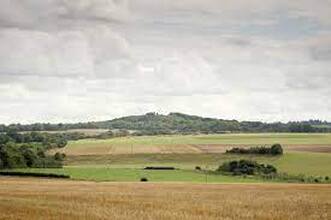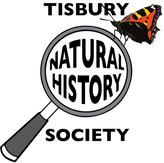 Organiser: Peter Shallcross Reserve Manager: Patrick Cashman Our first Field Trip of the season was to the RSPB's 200 acre reserve at Winterbourne Downs, South east of Amesbury, to see stone curlews and the fruits of the conservation work Nick Tomalin described so graphically at our February meeting. We met reserve manager, Patrick Cashman and although the weather wasn't helpful with his help we did see a number of other species that inhabit this rolling chalk down-land. Andrew Graham writes that eleven members braved the grim weather forecast to visit this site which the RSPB is developing from restored arable fields into more than 200ha of new chalk grassland. The aim is to create an area of species-rich chalk grassland which forms a steppingstone between the two largest tracts of semi-natural chalk grassland in the British Isles – Salisbury Plain to the north and Porton Down to the south. As well as providing a haven for the stone-curlew in its Wessex stronghold it will form a wildlife corridor hopefully providing nature with greater resilience against climate change.
Patrick Cashman explained how the fields had been seeded to produce a mix of native flowers which attract insects in summer and provide seed for birds in winter. Cultivated strips along the field edges allow scarce arable plants to flourish while the key feature of the reserve, the fallow plots, provide nesting sites for birds such as lapwing, stone curlew, and grey partridge. We met at the car park located on part of an old railway line which forms one of the paths through the reserve. In the old hedgerows and scrub along side the old track we heard and saw four Sylvia warblers - lesser whitethroat, whitethroat, blackcap, and garden warbler – as well as yellowhammers and quite a few rabbits. From the viewing screen we had good views of at least two stone curlews out in one of the fallow plots. Their plumage provides particularly good camouflage, so it was only when they moved that we were able to spot them. There did not appear to be any lapwings on this plot although we did spy one on another fallow plot across the valley. Patrick explained how some of the site management was intended to make the place more attractive to turtle doves. Although they do not breed there currently, they do so not far away on Martin Down. By providing a pond, scrub, and seed-producing rough ground it is hoped that this increasingly scarce bird may colonise. As the weather was damp and overcast for most of our visit, we did not look closely at the butterfly banks which have been constructed and planted with suitable food plants for butterflies such as the small blue which has already colonised. As it did brighten up though, we saw a Dingy Skipper and later, as the sun came out, Peter spotted a very smart looking Marsh Fritillary butterfly which posed with its wings outspread for us all to admire. Also brought out by the sun and warmth were plenty of black St Marks flies (or hawthorn flies) with their dangling legs. We had been hoping to see a corn bunting and as we headed back to the car park one duly obliged by flying up out of the cultivated field edge to sit atop a hawthorn from which is sang its distinctive “jangling keys” song. Although the grey partridge eluded us, the weather was kinder than expected and we learned a great deal about the RSPB’s continuing work on the site and its growing success. The marsh fritillary was a bonus. Comments are closed.
|
Photo: Avocets (Izzy Fry)
The headers display photos taken by our members. Do get in touch via the Contact Form if you'd like to submit a photo for selection.
Archives
May 2024
Categories
All
|

 RSS Feed
RSS Feed